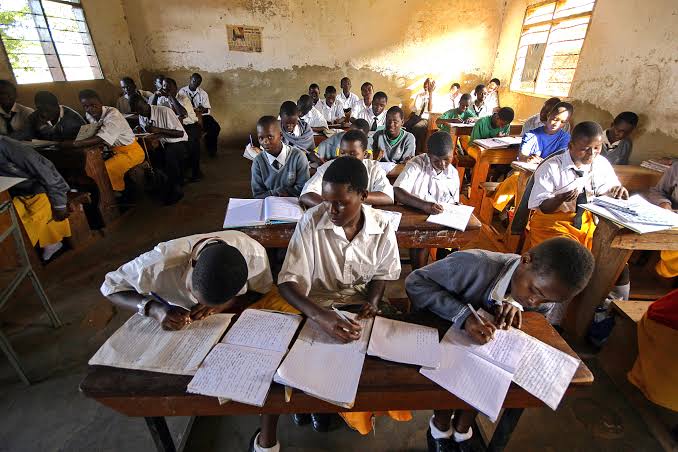
In recent years, the issue of student suicides in India has garnered significant attention due to its alarming rise. The phenomenon has reached epidemic proportions, with the annual rate of student suicides surpassing both the country’s population growth and the overall trend of suicides. The gravity of this situation is underscored by a recent report titled “Student Suicides: An Epidemic Sweeping India,” which was highlighted in a conference by the International Career and College Counseling (IC3) organization. This report, based on data from the National Crime Records Bureau (NCRB), reveals a stark and disturbing trend that demands immediate attention and action.
The Rising Trend of Student Suicides
According to the report, India has witnessed a 2% annual increase in overall suicides, but the rate of student suicides has increased at a significantly higher rate of 4% annually. This increase in student suicides over the past two decades is particularly concerning, as it outpaces the national average of suicides, indicating that students are disproportionately affected by mental health challenges that lead to such tragic outcomes.
In 2022, the total number of student suicides reached 13,044, compared to 6,654 a decade earlier. This sharp rise in student suicides, which accounts for a significant proportion of the overall increase in suicides in India, is a reflection of the intense pressure and challenges faced by students in the country. Notably, 53% of these suicides were committed by male students, a statistic that reflects a complex interplay of factors that make male students more vulnerable to suicide. However, the report also notes a concerning rise in suicides among female students, which increased by 7% in the same period.
Geographical Distribution and Demographics
The report highlights that certain states in India, such as Maharashtra, Tamil Nadu, and Madhya Pradesh, have particularly high rates of student suicides. These three states alone account for one-third of all student suicides in the country. Rajasthan, notably, ranks 10th on the list, with a significant number of suicides reported from Kota, a city known for its intense coaching culture aimed at preparing students for competitive exams.
Kota, in particular, has gained notoriety for the high pressure environment that students face. Known as the coaching capital of India, Kota attracts thousands of students every year who come to prepare for entrance exams to prestigious institutions like the Indian Institutes of Technology (IITs) and medical colleges. The city’s high-pressure environment, combined with the isolation of being away from home and family, has created a toxic mix that has led to an increasing number of student suicides.
Underreporting of Student Suicides
One of the critical points raised by the report is the potential underreporting of student suicides. The NCRB data is based on FIRs (First Information Reports) filed with the police, but not all cases of student suicides are reported, especially in rural areas where there may be limited access to law enforcement or where cultural stigma may prevent families from reporting suicides. The report suggests that the actual number of student suicides could be much higher than the reported figures, which paints an even grimmer picture of the situation.
Moreover, the Mental Healthcare Act of 2017, which decriminalizes attempted suicide, may lead to more accurate reporting in the future. However, the stigma associated with mental health issues and suicide in India remains a significant barrier to understanding the full extent of the problem.
Root Causes of Student Suicides
The causes of student suicides in India are multifaceted and complex. The intense academic pressure, societal expectations, and a lack of adequate mental health support are some of the primary factors contributing to this crisis. Students in India often face immense pressure to perform well in academics, particularly in competitive exams that determine their future career paths. The fear of failure, coupled with the stigma of not meeting expectations, can lead to severe anxiety and depression.
In many cases, students also struggle with the isolation that comes with moving away from home to study in different cities. The lack of a support system, combined with the stress of academic work, can exacerbate feelings of loneliness and hopelessness. Additionally, the competitive environment in schools and colleges often fosters a culture of comparison, where students are constantly measured against their peers, leading to a sense of inadequacy and low self-esteem.
Another significant factor is the lack of mental health resources in schools and colleges. Despite the growing awareness of mental health issues, many educational institutions in India still do not have adequate counseling services or mental health support systems in place. This leaves students without the necessary resources to cope with stress and anxiety, making them more vulnerable to suicidal thoughts.
The Role of Educational Institutions
Educational institutions play a crucial role in shaping the mental health of students. The report from IC3 and NCRB emphasizes the need for a holistic approach to education that goes beyond academics and addresses the mental and emotional well-being of students. Schools and colleges need to create an environment where students feel supported and where mental health is given the same importance as academic achievement.
One of the key recommendations from the report is the need for educational institutions to provide better counseling and mental health services. This includes training teachers and staff to recognize the signs of mental health issues and to provide the necessary support to students who may be struggling. Additionally, there is a need for more open conversations about mental health in schools and colleges to reduce the stigma associated with it and to encourage students to seek help when they need it.
Government Initiatives and Policies
The Indian government has taken steps to address the issue of student suicides, but there is still a long way to go. The Mental Healthcare Act of 2017 is a positive step in the right direction, as it decriminalizes attempted suicide and recognizes the importance of mental health care. However, there is a need for more comprehensive policies that specifically address the mental health needs of students.
One of the key areas where the government can make a difference is in the area of mental health education. There is a need for more awareness programs in schools and colleges that educate students about mental health issues and provide them with the tools they need to cope with stress and anxiety. Additionally, the government can work with educational institutions to ensure that counseling services are available to all students and that there is adequate support for those who may be struggling with mental health issues.
The Role of Parents and Society
Parents and society also have a significant role to play in addressing the issue of student suicides. The intense pressure to succeed in academics often comes from parents who have high expectations for their children. While it is natural for parents to want the best for their children, it is important to recognize that this pressure can have a detrimental effect on their mental health.
Parents need to be more aware of the signs of stress and anxiety in their children and to provide them with the support they need. This includes being more understanding and supportive of their children’s choices, even if they do not align with their own expectations. Additionally, society as a whole needs to move away from the culture of comparison and competition that often drives students to despair.
The rising trend of student suicides in India is a matter of national concern that requires urgent attention from all stakeholders, including the government, educational institutions, parents, and society as a whole. The report from IC3 and NCRB highlights the need for a comprehensive approach that addresses the root causes of student suicides and provides the necessary support to students who may be struggling with mental health issues.
By taking proactive steps to address this crisis, India can create a more supportive and nurturing environment for its students, where they can thrive both academically and emotionally. The future of the country depends on the well-being of its youth, and it is imperative that we take action now to prevent further loss of life.
Key Recommendations:
1. Enhanced Mental Health Support: Schools and colleges should prioritize mental health by providing counseling services and training staff to recognize mental health issues.
2. Government Intervention: More comprehensive mental health policies and awareness programs are needed to educate students about coping mechanisms and reduce stigma.
3. Parental and Societal Role: Parents should be more supportive and less pressuring, and society must shift away from a culture of intense competition.
4. Addressing Underreporting: Steps should be taken to ensure more accurate reporting of student suicides, especially in rural areas.
By implementing these recommendations, India can begin to reverse the troubling trend of student suicides and ensure a healthier, more supportive environment for its youth.

 A.B.M. Abir
A.B.M. Abir 






















